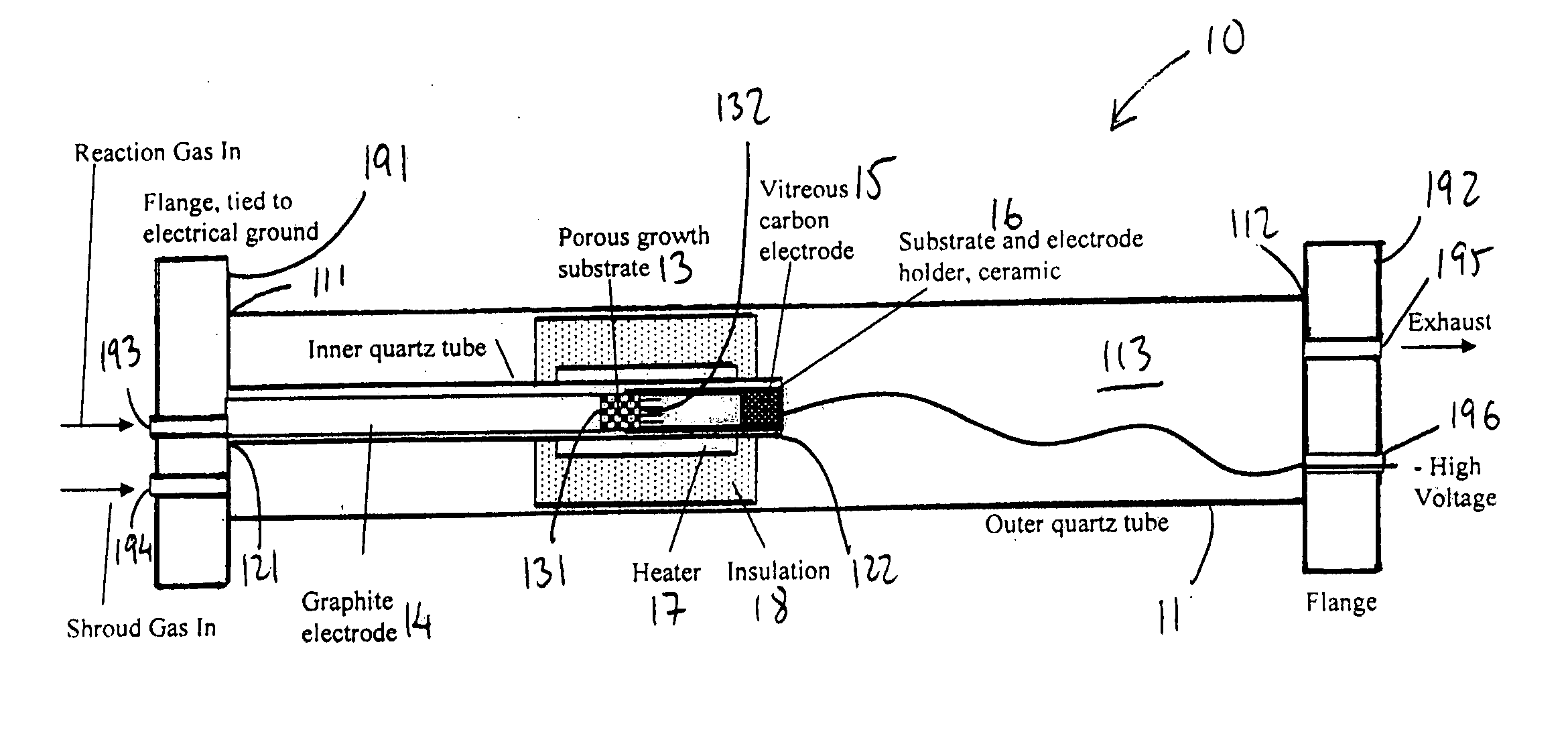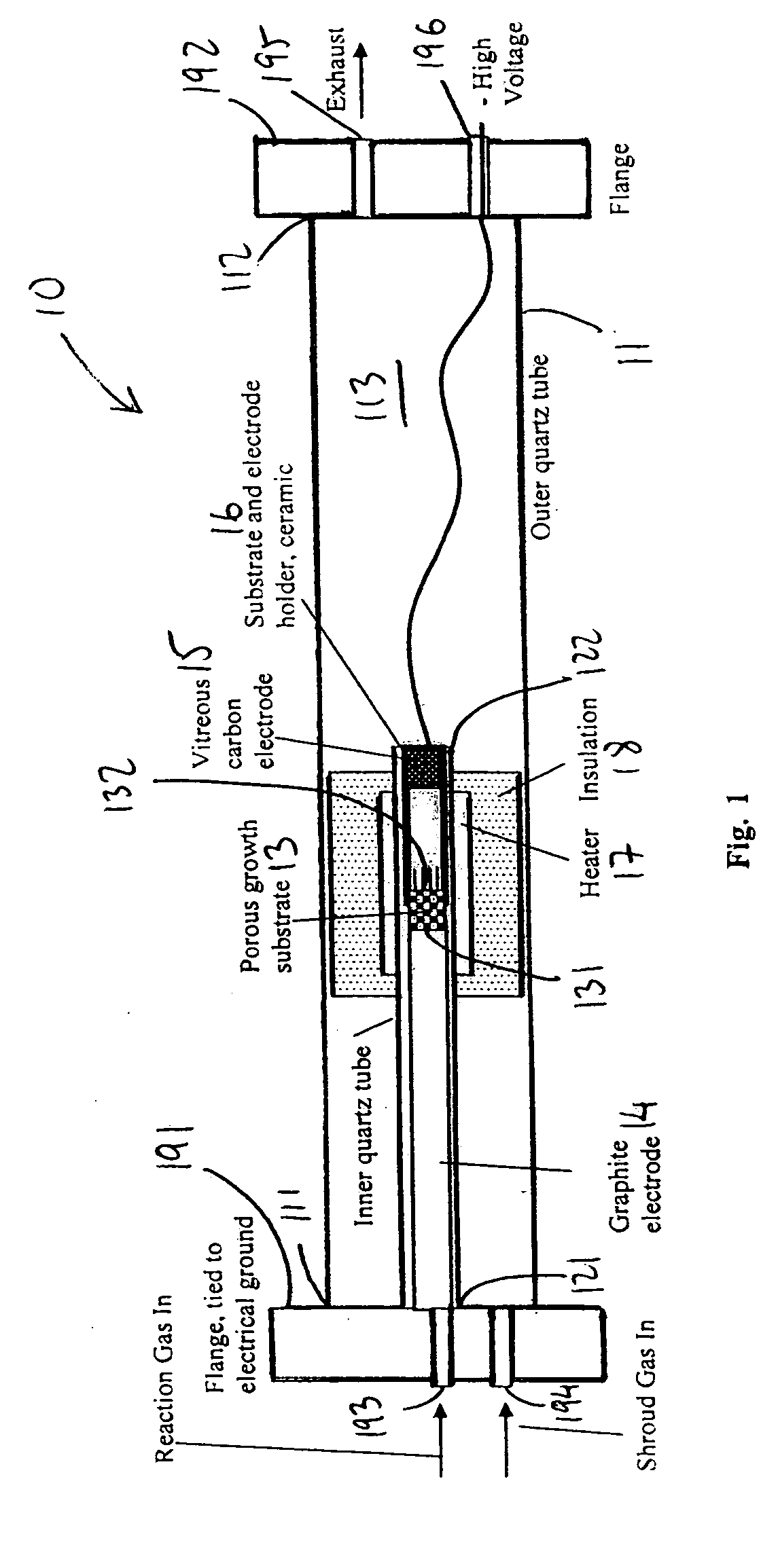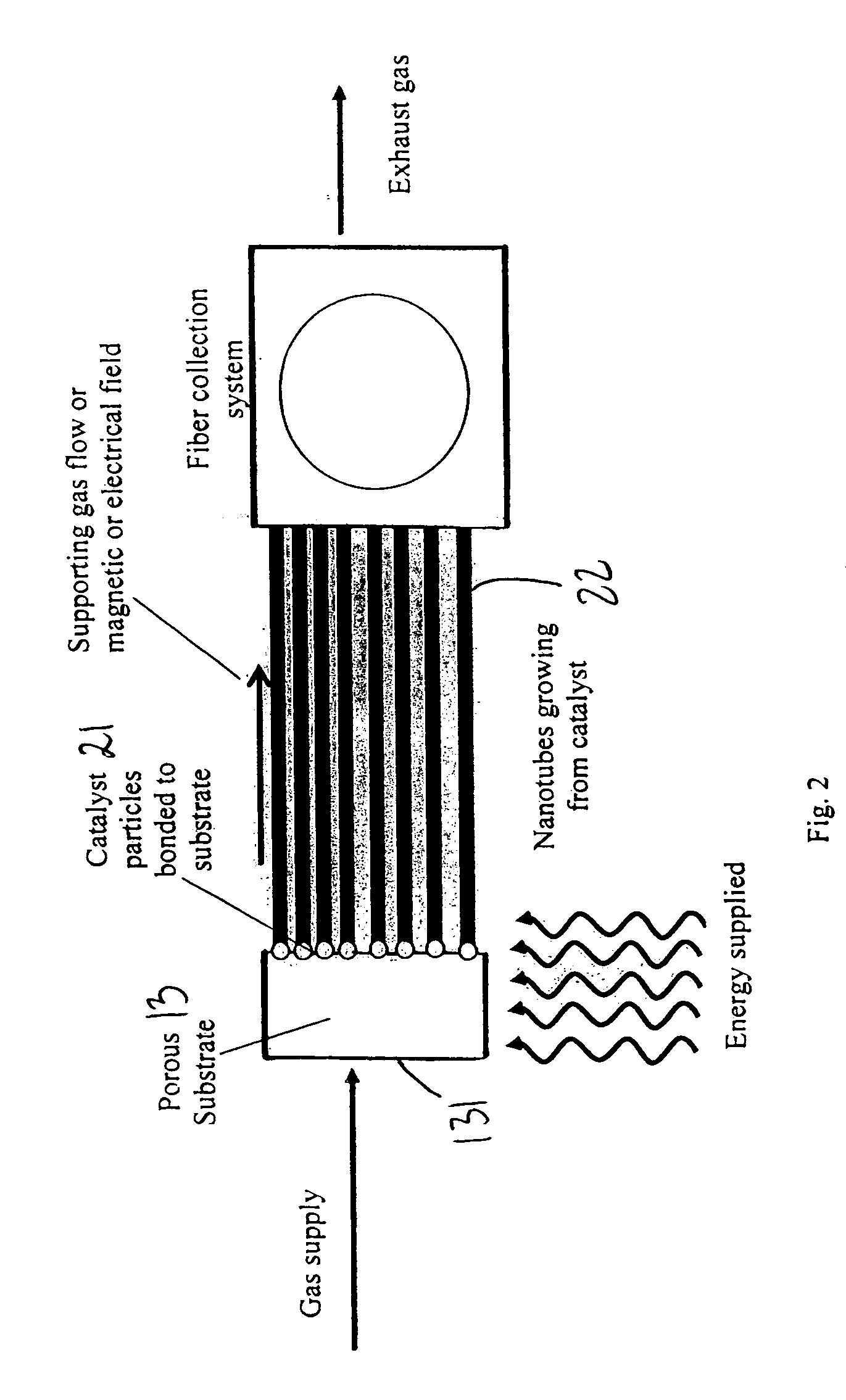Systems and methods for synthesis of extended length nanostructures
a nanostructure and nano-structure technology, applied in nanoinformatics, nanotechnology, nanotechnology, etc., can solve the problems of short nanotubes produced by these studies, limited composite material reinforcement, and limited diffusion of feedstock gas to the catalytic particle,
- Summary
- Abstract
- Description
- Claims
- Application Information
AI Technical Summary
Benefits of technology
Problems solved by technology
Method used
Image
Examples
example i
[0055] Prior to initiating the synthesis process, a porous substrate needs to be provided on which there can be deposited a concentration of catalyst particles for growing extended length nanotubes of extended length.
Substrate and Formation of Catalyst Particles
[0056] The substrate, in one embodiment, may be a porous alumina foam having approximately 50 micron to 200 micron pores and an approximately 50% to 90% void fraction. It should be noted that the substrate may be formed from various different materials, so long as the substrate can be provided with pores size ranging between 5 nm and 500 microns, and void fractions ranging between 10% and 95%. The alumina foam may initially be cut to fit into a holder, such as holder 16 in FIG. 1. Next, catalyst particles may be deposited onto the downstream surface of the substrate.
[0057] In one embodiment, approximately 0.05 grams of commercially available Ni nanoparticles, about 5 nm in diameter, may initially be dispersed in about 10 ...
example ii
[0093] The present invention provides, in another embodiment, a process for generating extended length prismatic structures. Prismatic structures, in on embodiment, can be an array of graphene planes joined to form a three dimensional lattice. The prismatic structures generated can have similar energy and carbon feedstock requirements as the reaction described above for the growth of carbon nanotubes. As such, the gas, energy and reaction conditions described above in connection with the growth of nanotubes also apply to the growth of prismatic carbon structures.
Catalyst Tiling for Prismatic Structures
[0094] Prismatic structures arise from the self-assembly of carbon on a different pattern of catalytic material than that used for formation of nanotubes. In accordance with one embodiment of the present invention, the nanotubes can be formed as carbon self-assembles around a catalyst ‘particle’ on a porous substrate. Prismatic structures, on the other hand, can be synthesized from ...
PUM
| Property | Measurement | Unit |
|---|---|---|
| Temperature | aaaaa | aaaaa |
| Temperature | aaaaa | aaaaa |
| Length | aaaaa | aaaaa |
Abstract
Description
Claims
Application Information
 Login to View More
Login to View More - R&D
- Intellectual Property
- Life Sciences
- Materials
- Tech Scout
- Unparalleled Data Quality
- Higher Quality Content
- 60% Fewer Hallucinations
Browse by: Latest US Patents, China's latest patents, Technical Efficacy Thesaurus, Application Domain, Technology Topic, Popular Technical Reports.
© 2025 PatSnap. All rights reserved.Legal|Privacy policy|Modern Slavery Act Transparency Statement|Sitemap|About US| Contact US: help@patsnap.com



